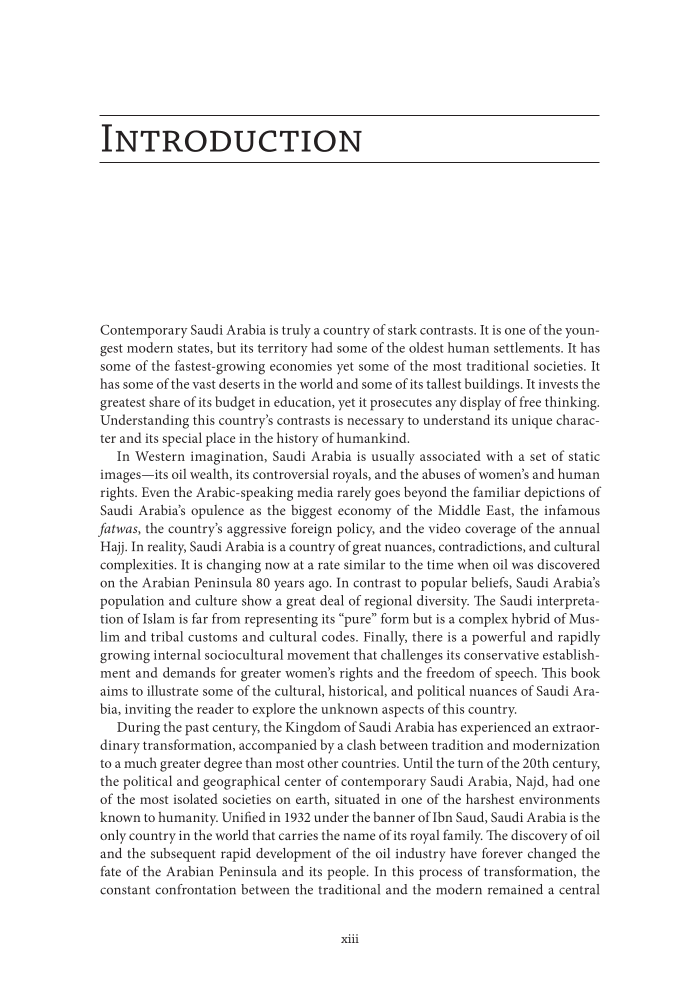xiii Introduction Contemporary Saudi Arabia is truly a country of stark contrasts. It is one of the youn gest modern states, but its territory had some of the oldest human settlements. It has some of the fastest-growing economies yet some of the most traditional societies. It has some of the vast deserts in the world and some of its tallest buildings. It invests the greatest share of its budget in education, yet it prosecutes any display of free thinking. Understanding this country’s contrasts is necessary to understand its unique charac- ter and its special place in the history of humankind. In Western imagination, Saudi Arabia is usually associated with a set of static images—its oil wealth, its controversial royals, and the abuses of women’s and human rights. Even the Arabic-speaking media rarely goes beyond the familiar depictions of Saudi Arabia’s opulence as the biggest economy of the Middle East, the infamous fatwas, the country’s aggressive foreign policy, and the video coverage of the annual Hajj. In reality, Saudi Arabia is a country of great nuances, contradictions, and cultural complexities. It is changing now at a rate similar to the time when oil was discovered on the Arabian Peninsula 80 years ago. In contrast to popular beliefs, Saudi Arabia’s population and culture show a great deal of regional diversity. The Saudi interpreta- tion of Islam is far from representing its “pure” form but is a complex hybrid of Mus- lim and tribal customs and cultural codes. Finally, there is a powerful and rapidly growing internal sociocultural movement that challenges its conservative establish- ment and demands for greater women’s rights and the freedom of speech. This book aims to illustrate some of the cultural, historical, and political nuances of Saudi Ara- bia, inviting the reader to explore the unknown aspects of this country. During the past century, the Kingdom of Saudi Arabia has experienced an extraor- dinary transformation, accompanied by a clash between tradition and modernization to a much greater degree than most other countries. Until the turn of the 20th century, the political and geographical center of contemporary Saudi Arabia, Najd, had one of the most isolated societies on earth, situated in one of the harshest environments known to humanity. Unified in 1932 under the banner of Ibn Saud, Saudi Arabia is the only country in the world that carries the name of its royal family. The discovery of oil and the subsequent rapid development of the oil industry have forever changed the fate of the Arabian Peninsula and its people. In this process of transformation, the constant confrontation between the traditional and the modern remained a central
Document Details My Account Print multiple pages
Print
You have printed 0 times in the last 24 hours.
Your print count will reset on at .
You may print 0 more time(s) before then.
You may print a maximum of 0 pages at a time.































































































































































































































































































































































































